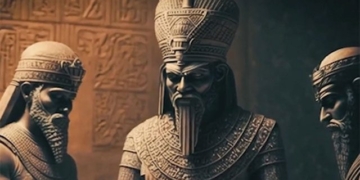Ancient Egyptians are famous for their burial practices. Over the centuries, archaeologists have discovered various types of burial goods and decorations contained within tombs dating back thousands of years.
Below are 13 items that frequently appear in Egyptian tombs:
Replica of the “Book of the Dead”
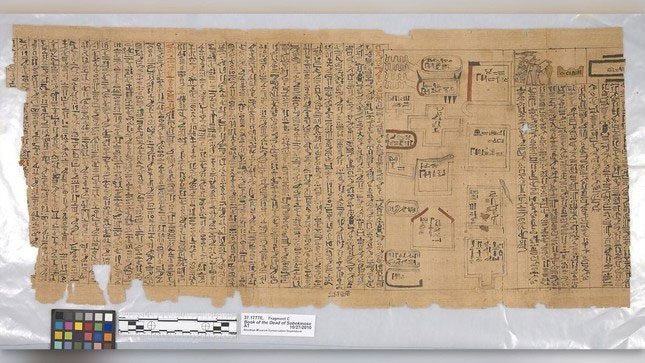
A replica of the “Book of the Dead” found in a tomb from the 18th Dynasty, around 1550 to 1295 BCE. (Photo: Sepia Times/Universal Images Group).
The “Book of the Dead” is the modern name given to a collection of texts that ancient Egyptians were sometimes buried with. These texts were intended to help the deceased navigate the afterlife. The content of these texts varies widely but often describes what the ancient Egyptians believed they would encounter in the afterlife, such as the ritual of weighing the heart, in which a person’s deeds are balanced against the feather of the goddess Maat, a deity associated with justice.
Sarcophagi – Exquisite Coffins

Sarcophagi displayed at the “Egyptian Mummies” exhibition (Photo: Jorge Gil/Europa Press).
Ancient Egyptians were sometimes buried in coffins adorned with illustrated images. These ornate coffins often featured hieroglyphs inscribed with the name of the deceased and prayers for them. The coffins could consist of multiple layers, with the mummy at the center.
Depending on the wealth of the individual, coffins could be made from expensive materials. For instance, the coffin of Tutankhamun was made from a significant amount of gold.
Mummy Portraits
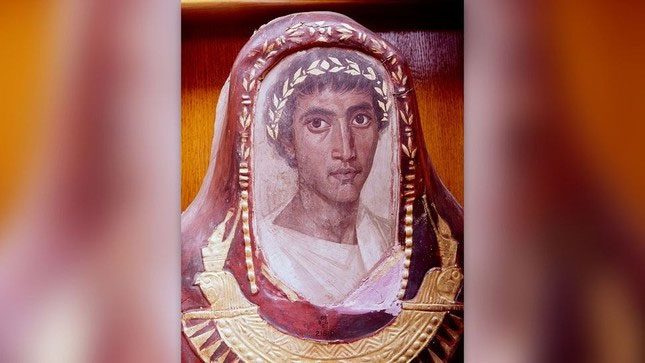
A mummy portrait of Artemidorus from Hawara, Egypt, dating from around 100 to 120 CE during the Roman period in Egypt. The golden laurel wreath on his head symbolizes that he has transcended death. (Photo: Ann Ronan Pictures).
Susan Walker, an honorary curator and antiquities keeper at the Ashmolean, UK, stated that mummy portraits present vivid images of the deceased. These portraits were painted on wooden panels created from the first to third centuries CE, while portraits painted on linen shrouds continued throughout the fourth century. These portraits were affixed to the mummies of the deceased.
Walker noted that the use of mummy portraits was particularly popular in the Fayum region, although mummy portraits have been found in other parts of Egypt as well.
Shabti Figurines
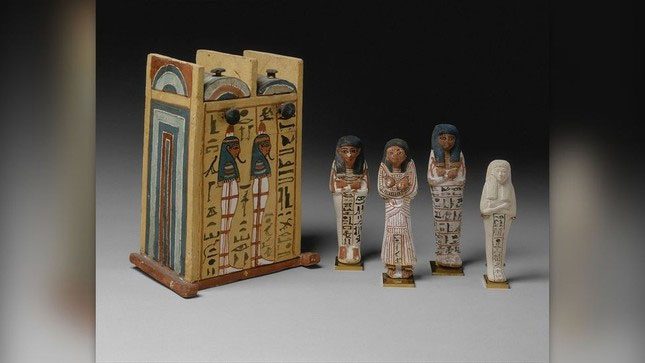
A collection of shabti figurines and a box made from painted wood, limestone, and ink, crafted around 1279 to 1213 BCE. (Photo: Sepia Times/Universal Images Group).
Shabti figurines (also known as ushabti) were used to serve the deceased in the afterlife. Depending on the tomb, an individual could be buried with hundreds of shabti figurines. A simple shabti could be made of ceramic, while more elaborate ones could be gold-plated.
Peter Lacovara, director of the Ancient Egyptian Heritage and Archaeology Fund, wrote in the book “The World of Ancient Egypt: Encyclopedia of Daily Life”: “The figures are often inscribed with a spell to make them magically animate in the afterlife, complete with tools in hand and a basket slung over the shoulder to be ready to perform any task required of the deceased in the afterlife.”
Canopic Jars
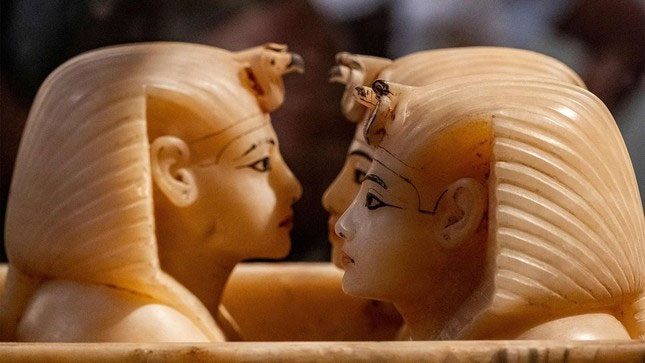
Canopic jars from the tomb of King Tut. (Photo: AMIR MAKAR/AFP).
Canopic jars contained some of the internal organs of the deceased, which were removed during the mummification process and buried with the mummy. According to the Metropolitan Museum of Art in New York City, organs such as the lungs, liver, intestines, and stomach were each placed in separate jars.
The ancient Egyptians believed each organ was protected by one of the four sons of the falcon-headed god Horus. However, the jars were sometimes placed within a chest with a lid. A famous example is Tutankhamun’s tomb, which contained four jars placed in a gypsum chest.
The Golden Tongue
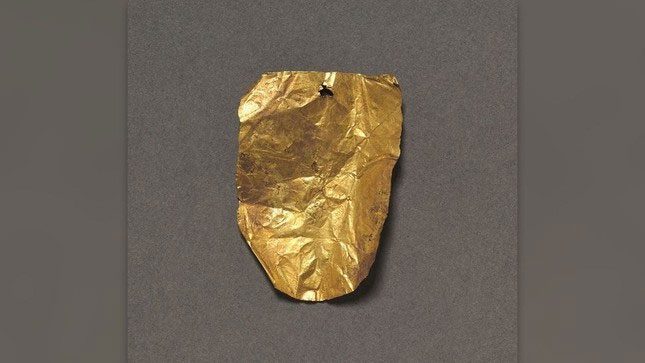
A golden tongue dating from the Roman period of Egypt. (Photo: Sepia Times/Universal Images Group).
Golden tongues were sometimes buried with Egyptian mummies during the Greco-Roman period (332 BCE to 395 CE). The Egyptians may have placed these golden tongues within the mummies so that they could speak to the gods in the afterlife.
Wall Paintings
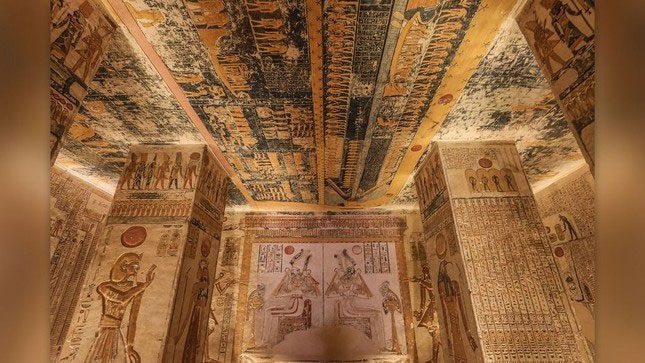
Colorful paintings inside the tomb of Ramesses VI in the Valley of the Kings, Luxor, Egypt. (Photo: Mohamed Elshahed, Anadolu Agency).
Wall paintings sometimes adorned the tombs of wealthy ancient Egyptians. Artists depicted various motifs, including portraits of the deceased, images of gods, scenes of the deceased honoring the gods, and paintings of mourners grieving for the departed.
The artwork within the tombs sometimes also illustrated daily life in Egypt. They could even depict scenes of sporting events, such as wrestling and dancing. Hieroglyphs were sometimes painted alongside wall paintings, providing information about those buried in the tombs and what they had accomplished in life.
Amulets
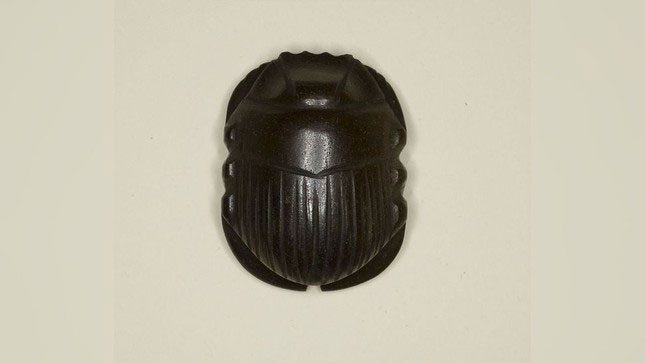
Amulets from the Ptolemaic period of Egypt (305 to 30 BCE). (Photo: Heritage Art).
Scarab-shaped amulets were sometimes buried with the deceased in ancient Egypt. Gene Kritsky, an honorary professor of biology at Mount St. Joseph University, who studies and writes about Egyptian amulets, stated: “These small amulets were sewn into the linen of the mummy and were used to protect the deceased.” Kritsky further noted that thousands of scarab beetles have been found in Egypt.
Statues Placed in Tombs
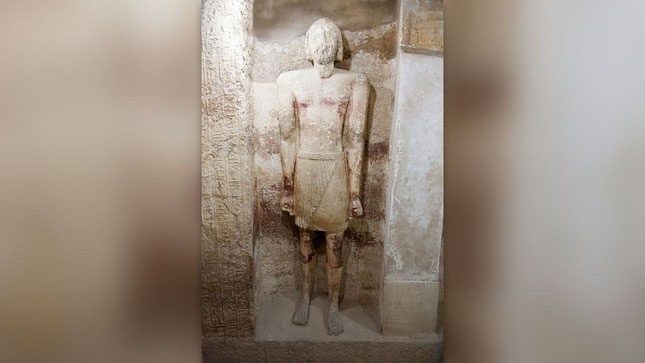
A stone statue from the Fraser Tomb, a burial site near Al Minya, Egypt. (Photo: Mike P Shepherd / Alamy Stock Photo).
Ancient Egyptians sometimes placed statues in tombs. In some cases, these statues depicted gods.
For instance, in January 2024, archaeologists announced that they had discovered a statue depicting Harpocrates, a childlike Greek god associated with silence, inside a tomb dating back about 2,000 years in Saqqara. These statues may have been placed to express the religious devotion of the deceased.
In April 2023, archaeologists reported that they had found a 3,300-year-old tomb in Saqqara belonging to a man named Panehsy. Inside, they discovered a statue of Panehsy and his family carved in relief.
Jewelry
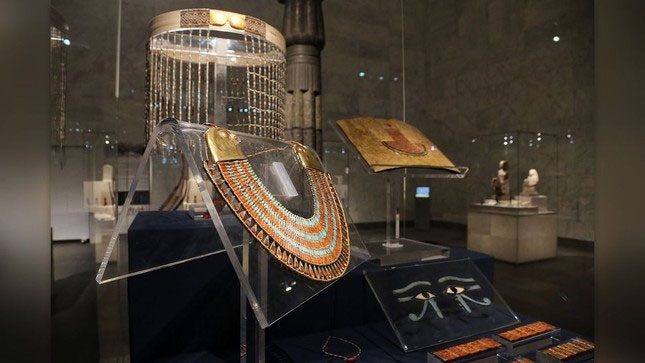
Ancient jewelry displayed at the National Museum of Egyptian Civilization. (Photo: Ziad Ahmed/NurPhoto).
Many pieces of jewelry – including necklaces, rings, and brooches – were buried with the deceased in ancient Egypt. The wealthier the individual, the more elaborate the jewelry.
For example, Tutankhamun’s tomb contained a vast array of jewelry, including intricately designed pectorals.
Susan Allen, a senior research scholar at the Metropolitan Museum of Art, wrote in the book “The Tomb of Tutankhamun” that the designs of two of the pectorals in the tomb of this young king are highly intricate and include depictions of scarabs, poppies, and crescent moons.
Animal Mummies
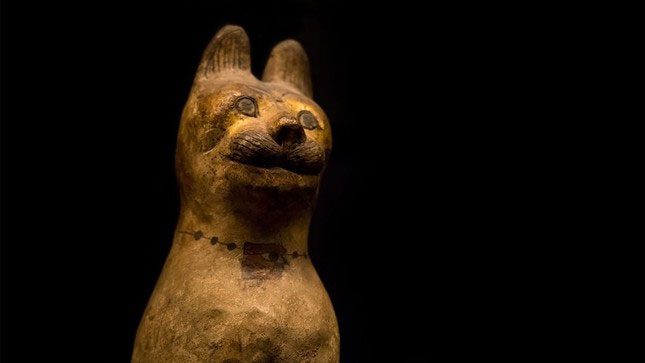
An ancient cat mummy in a wooden cat coffin. (Photo: N. Rotteveel).
Animal mummies were sometimes interred alongside the deceased. These could be beloved pets buried with their owners in the afterlife.
Lisa Sabbahy, an associate professor of Egyptology at the American University in Cairo, wrote: “Sometimes, animal remains – such as cattle, ducks, and geese – are ‘prepared for cooking’ and then embalmed.”
She also noted that these remains were intended for the tomb owner and possibly their pets to consume in the afterlife.
Mummy Masks
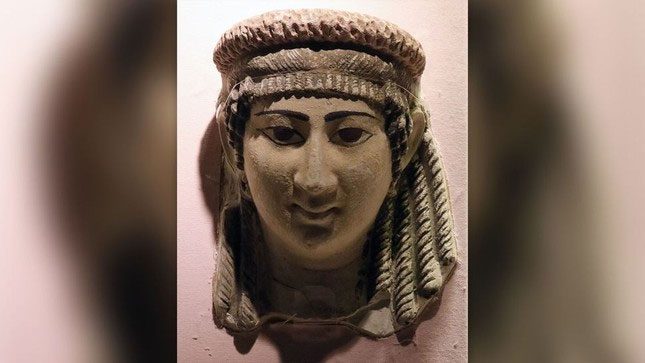
A first-century AD plaster mummy mask from Minya, Egypt. (Photo: Global Historical Archive).
The deceased were sometimes buried with masks. According to the Museum of Fine Arts, Boston, these masks represent the “idealized image of the deceased.” They could be made from plaster, cardboard, linen, and in a few rare cases, precious metals. In 2018, archaeologists working at the Saqqara site, the burial ground of ancient Egyptians, discovered a gilded silver mummy mask belonging to a priest who served the goddess Mut, the sky goddess.
Model Boats
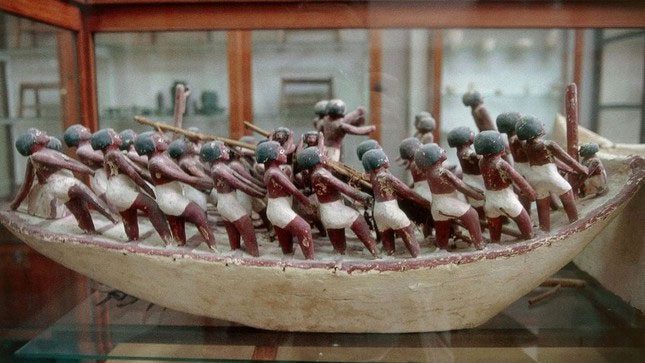
A model of a boat from a tomb in Deir el-Bahari, Egypt, dating back to the 11th Dynasty, around 2030 to 1981 BC. (Photo: DeAgostini).
Archaeologists have also found wooden model boats in ancient Egyptian tombs. A notable example is from the tomb of Djehutynakht, a governor who lived about 4,000 years ago and was buried with 55 model boats in his tomb at Deir el-Bersha, according to the Museum of Fine Arts, Boston.
These included boats for transporting troops or goods and boats for hunting and fishing. One of the boats is believed to be carrying what appears to be the mummy of Djehutynakht.

















































